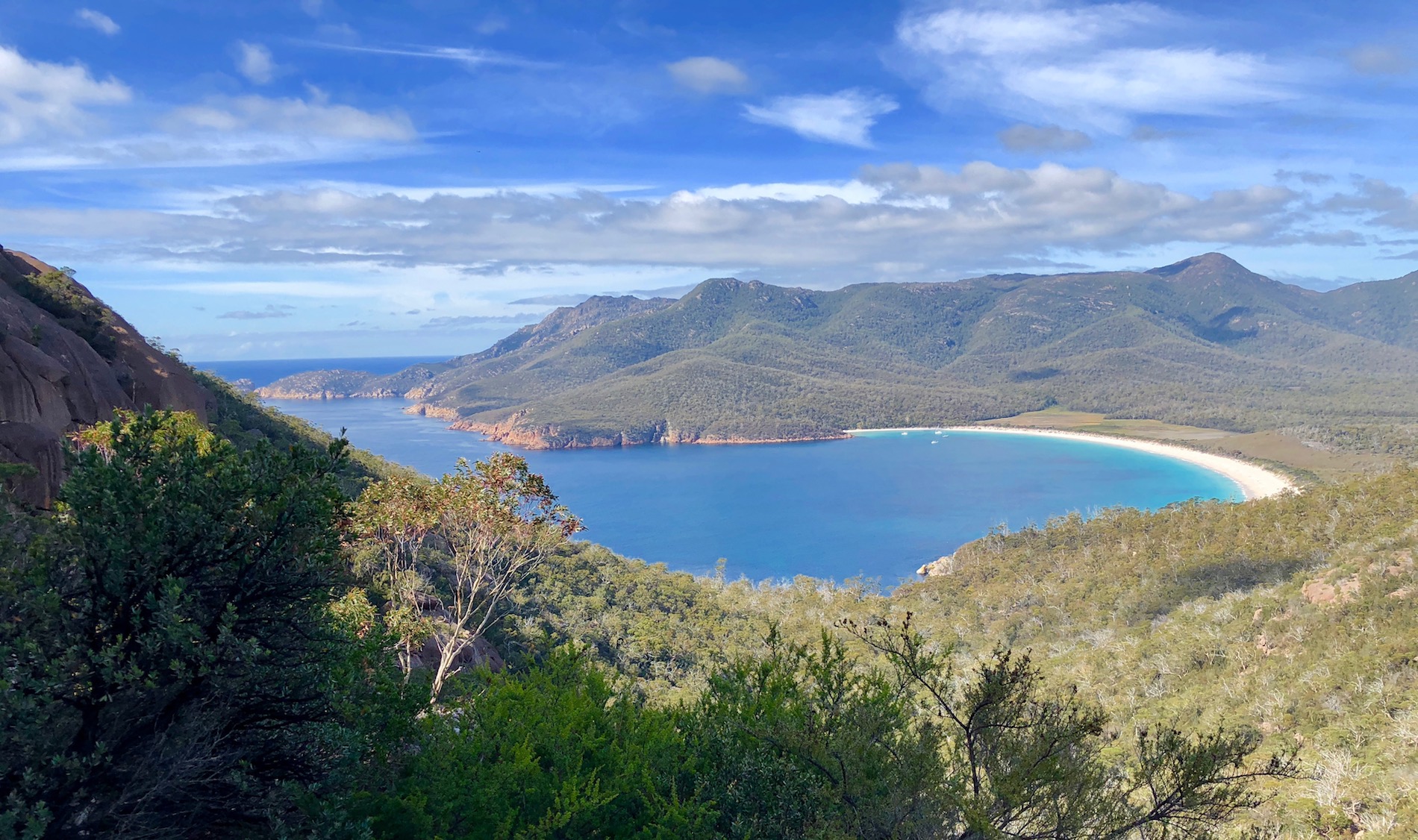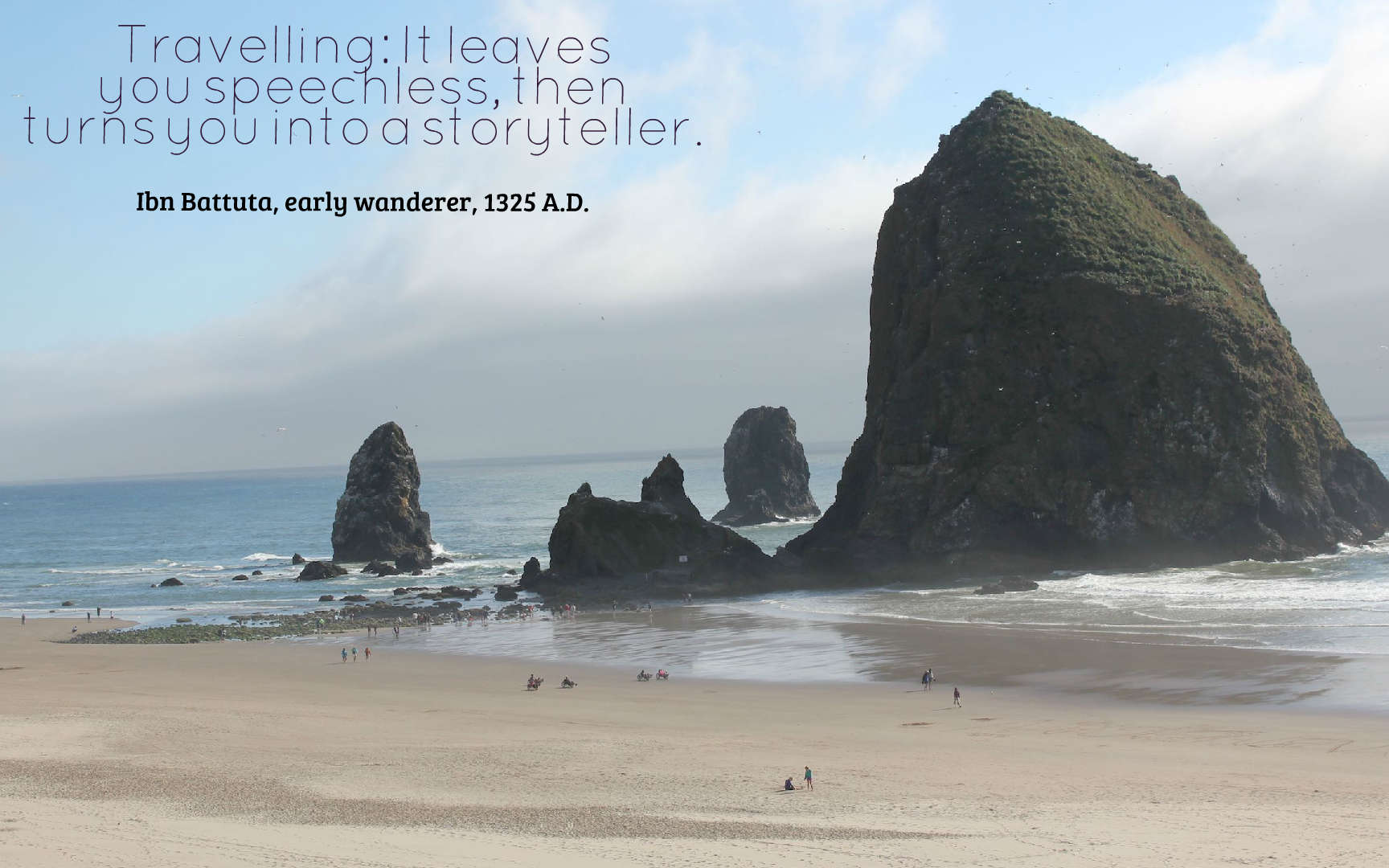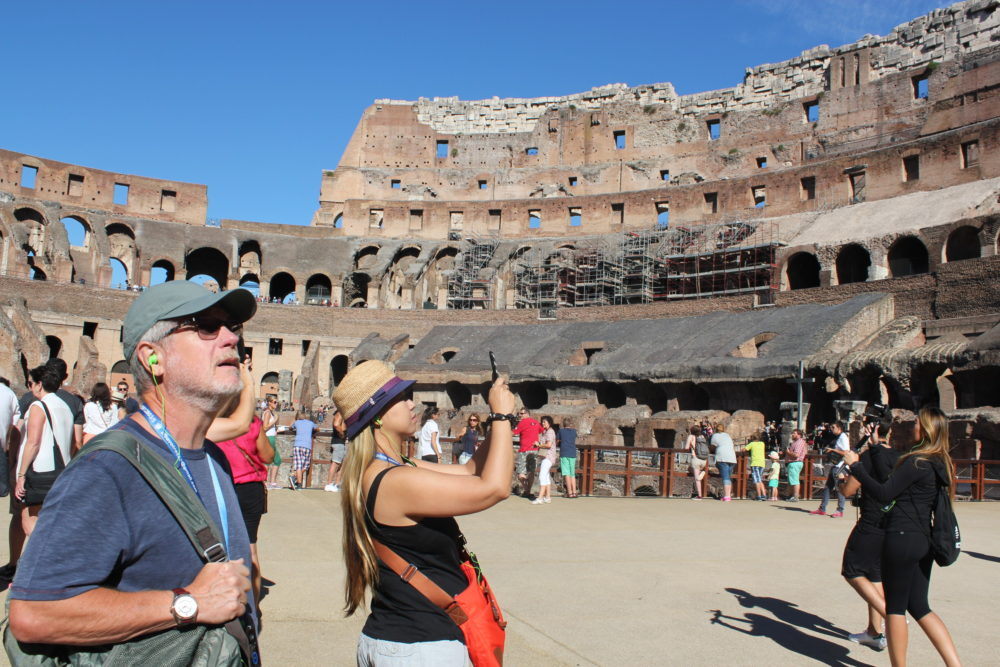
Key West and the Dry Tortugas: The Sounds of Silence and the Boat to Nowhere

Something seemed off.
With daypacks hitched to our backs, we hiked through Key West’s sleepy streets to the ferry terminal before dawn, then climbed aboard Yankee Freedom III for our trip to Dry Tortugas National Park. Along with 248 other intrepid souls, we were off for a nine-hour tour to one of the most remote national parks in our nation.

After a long ocean journey that took us far away from Key West’s party scene and 70 miles out to sea, we spotted a tiny American flag perched atop a faraway hexagonal brick structure. This distant fort in ruins seemed like a mirage, but Fort Jefferson – a former Civil War military fort-turned prison – loomed larger in our vision field as we neared the dock. Definitely not a mirage. Very solid.

Solid brick.
A lot of brick.
Sixteen million bricks, in fact, and the largest manmade masonry structure ever built in the Western Hemisphere.
After disembarking Yankee Freedom, we traversed the moat drawbridge, entered the fort, turned left, and…….still, something seemed weird.
We were making our way down a quiet tunneled hallway inside the Fort’s eight-foot thick brick walls, alone in the gloom, since other ferry passengers had scattered off to parts unknown. We located Dr. Samuel Mudd’s quarters, the man who was incarcerated here for four years after he helped President Lincoln’s assassin John Wilkes Booth by attending to his broken leg. I’m sure you’ve said to someone, or yourself, ‘Your name is mud’ –which means you have disgraced yourself in some way (I know I have, plenty of times).

Dr. Mudd’s story is why we say that, even though he may have also been a good guy. Turns out he received a pardon from President Andrew Johnson after heroically treating Fort Jefferson prisoners and staff stricken with yellow fever. To his dying day, Mudd claimed he didn’t know who Booth was when he set the leg, but the historical debate rages on in terms of his goodness or badness. (Based on what I understand about human nature and history, I’ll bet he was both).
Maybe things felt off because a wall plaque near Mudd’s prison quarters explained in bold lettering that This Was Not a Happy Place, and one door used to have a sign on it that quoted Dante’s Divine Comedy: ‘Abandon all hope, ye who enter here!’ (The mess hall door did as well, word had it.)
And of course I read Nevada Barr’s suspenseful murder mystery, Flashback, set here on Dry Tortuga’s Garden Key. A former park ranger herself, Barr writes murder mysteries set in the national parks, and all the bones in Flashback were buried not far from where we stood. Fiction, sure, but the fort felt spooky from the get-go.
Or maybe it was the words of one former fort worker, who wrote, “In the morning while the prisoners from the Thames were coming ashore, one of the guards shot himself in the head. He was crazy. Weather fair and pleasant.” Or the cat story another worker shared: “After retreat, Dr. Holder and Old Frost had a cat thrown in the breakwater for a shark but he did not seem to like cat meat and did not touch her and some of the prisoners hauled her up on an old shirt they had fast to a line. Mrs. Devendorf was mighty mad about it. “

Cat lover that I am, I was as mad as Mrs. Devendorf about that, even though it was over 150 years ago. But that wasn’t it either.
We exited through a doorway to the inner courtyard of the fort, which opened to the skies. Now we heard faint voices off in the distance, and looked up to see people walking on top of the fort walls. And that’s when we figured out what was off.
It was the silence.
It was what we weren’t hearing: No cars. No airplanes overhead. No construction hammering. No radios. No TVs. No constant background noise of modern city life. No cell phone tower, either, so no phones beeping or social media distractions.
Just a bird here or there, our own feet echoing off the bricks, a few far-off voices here or there.
What surprised us most was how eerie it felt, to be surrounded by so much quiet. Makes you wonder what all that noise does to us, over time. We are rather quiet-living folks, in fact – no all-day blaring TV or music in our home, but airplanes, humming appliances, and traffic noise are pretty constant. Just imagine how quiet it would be if you camped overnight here, which some ferry passengers were preparing to do. Campers also bring kayaks along (for an extra fee) so they can explore the other six Dry Tortugas islands, as well as reach several shallow water shipwrecks nearby for spectacular snorkeling and diving.

Once Yankee Freedom departs at 3:00 pm, the island belongs to the campers until 10:30 am the next morning (they probably raised a group ‘huzzah!’ when our tour boat left). Think of how wondrous the stargazing must be, or how amazing a night snorkel along the moat wall would feel. I’d love to do both of those things, if I could stand to sleep in a tent like I did as a younger person (not).

Which is not to say it was totally quiet on this trip. You should have seen sunbathers on Yankee Freedom’s top deck startle, for instance, when a military supersonic jet (or two) reached Mach 1 to break the sound barrier, making for a thunderous ka-boom blasted out of nowhere. (We think that’s what happened anyway, that or God was mad about something or other. Sure was ear-piercing). Civilization finds everyone on the planet nowadays, I guess, when there are fighter jets out and about.

A 15-inch Rodman smoothbore cannon points ominously out to sea from the fort’s high wall.
And the views! We explored the fort’s expansive inner courtyard until we found stone steps up to the top of the wall, and…..whoa! Truly spectacular views in every direction, aquamarine waters set against the bluest sky, with a few cannons here and there to remind us we were perched on top of a fort in the middle of nowhere. And these were not just any old cannons: These babies weighed 25 tons. The 15-inch Rodman smoothbore cannon shot 432 pounds of ‘projectile’ three miles out, and six of these (out of only 25 left in the world) were remounted on Fort Jefferson’s walls in 2010, after laying in the sand for over 100 years since no one could figure out how to move them without cranes or other heavy equipment. Clever researchers finally figured out how to recreate nineteenth-century moving tools to finish the job, a modern engineering feat in itself.
We continued to traverse the entire wall on a small dirt trail, before joining our tour guide David to learn more. Yankee Freedom tours are run by a private company, so David gets his paycheck despite the current government shutdown. National Park rangers still staff the fort for now, but they aren’t getting paid any time soon unless the government reopens. Thank you for your service, park rangers, and for taking care of one of our greatest national treasures, the Dry Tortugas, despite the indignity of no pay.
We learned the answer to our most pressing question about the fort from David (No, not ‘where are the bathrooms?’ – they’re back at the boat). We wanted to know why the United States built a fort like this waaaaaaaaaay out here, in the middle of nowhere? Turns out the US acquired the Dry Tortugas when they purchased Florida from Spain in 1822. Fort Jefferson was built to protect shipping lanes, especially the ones to New Orleans and the vital Mississippi river trade. And once the Civil War started, Fort Jefferson became a functional troop garrison, as well as the perfect place to imprison war deserters. (So you want to desert, eh? Well we have ‘deserted’ for you, ha ha!)


After our tour we strolled back to the boat for lunch (and a loud radio playing, quite jarring after all the quiet). We spent the afternoon on the island’s South Beach, swimming and snorkeling in the crystal-clear Caribbean waters. I had read about some great snorkeling in deeper waters off the moat wall, but David advised against it due to rougher winter waters. He also reassured me that what I’d see here would be just as good as what I’d see out in the depths. At first I saw nothing so I doubted his wisdom but silly me. When I saw a huge amberjack swim by, I knew he was right. Also a couple barracudas, schools of multi-colored reef fish and round blobs of brightly colored brain coral. Wow.

At least I didn’t have to worry about Cleatus the Crocodile, though. Cleatus showed up in 2003, hanging out by the docks and in the moat (which is rather appropriate, I have to point out). How he got here is a mystery (but I think he probably wanted to get away from all the partying and noise those Key West crocodiles were making). However he came, he lived here by himself for 14 years, earning him the nickname ‘the Loneliest Crocodile’ until he started following people around. That’s when rangers translocated him to Everglades National Park, so he’s not lonely any more; they’ve laying all over the place in that park, as I recall. Hope he’s happy there, and so glad he wasn’t here or I doubt I would have snorkeled. Those guys give me the creeps, even behind a fence in a zoo or sunning far away on a rock.
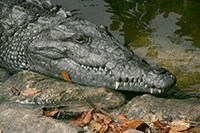
I love to watch circling birds here in Florida, usually turkey vultures, which I often see watching me as I float in the pool on an air mattress. Probably waiting for me to die, so they can pick away at the bones. Here on Garden Key, I watched several impressive frigatebirds with seven-foot wingspans swoop overhead, circling and circling, as we waited for the boat to depart. Turns out there are hundreds of bird species hanging out in the Dry Tortugas, so this is birdwatcher’s paradise.
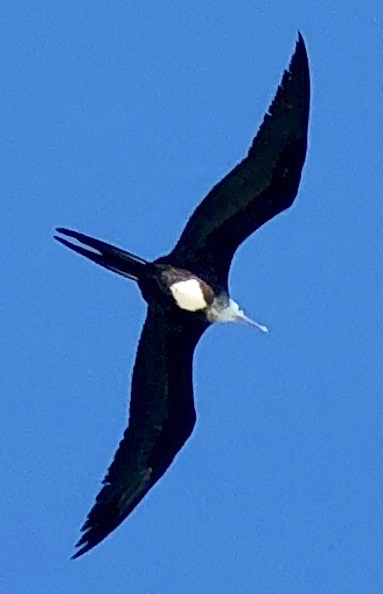
And don’t forget the turtles; ‘Tortugas’ means turtles, after all. Explorer Ponce de Leon named these islands Las Tortugas because turtles provided excellent food for sailors (the “dry” was added because the islands provide no fresh water). Turtle populations were almost wiped out due to overfishing, but today they are rebounding due to conservation efforts, even though I didn’t see any while I snorkeled. Darn. On the long trip back our captain zigged and zagged a couple times, though, and turns out the maneuvers were to avoid hitting turtles or lobster pots. Padre was fortunate enough to be hanging out on the bow when we swerved to miss one huge turtle, who dove for the depths as Yankee Freedom churned past.
While we found this trip to be spectacular, it’s probably not for everyone. I kept an eye on the weather for two weeks before we booked, gaming it to find a low-wind sunny day. Anyone prone to seasickness may struggle, and even though it was relatively calm, we noticed a couple passengers who looked pretty green. There are no facilities on the island – not even bathrooms (you go back to the boat when nature calls) – so come prepared with any necessities you think you need. I needed my small portable beach chair, for instance. I love that chair, and I make Padre haul it everywhere. (He’s a good guy, that Padre. The girl says ‘no tents’ and ‘must have chair’ and he goes with it).
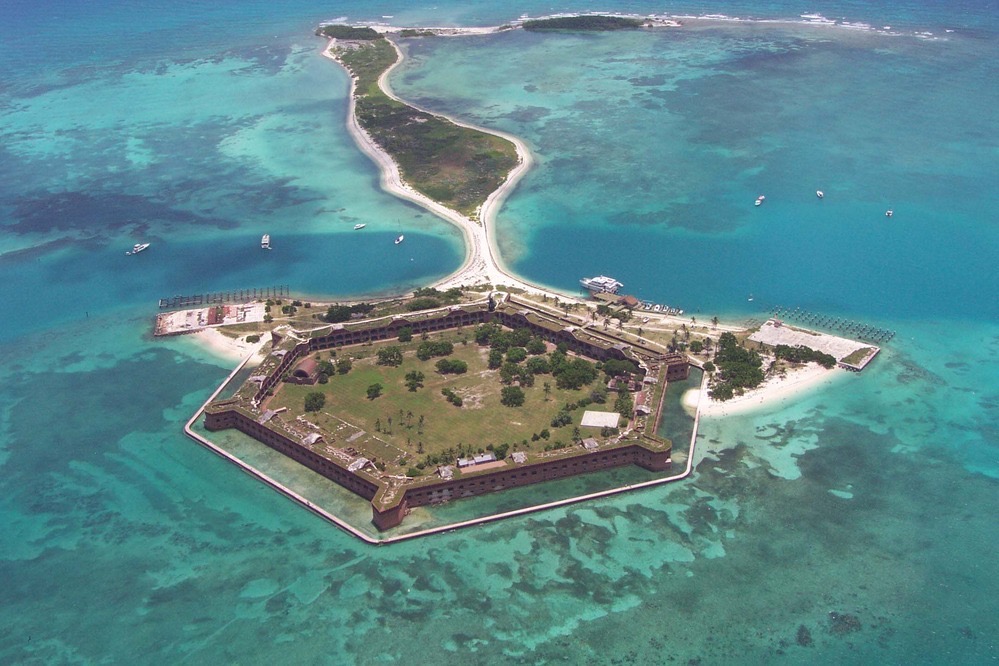
Another complication to visiting Fort Jefferson is that there are only three ways to get to here: On the Yankee Freedom (expensive), by seaplane (very expensive), or by private boat (very very expensive charters, or the right boat-owning friend). The Yankee Freedom, while pricy, is quite the deal: $155 with old people national park pass discounts, which includes transportation, tour, breakfast and lunch, and get this: The bar opens for the ride back, so passengers can reach the right frame of mind when Yankee Freedom slides into her berth, just in time for Key West’s famous Sunset Celebration.


We headed over to Turtle Kraals for our own sunset celebration, including delicious Happy Hour peel-and-eat shrimp and barbeque chicken wings, a fitting finale for our Dry Tortugas adventure. After dinner we walked home in the dark, which sounds dangerous but in Key West, after-dark walks tend to be just another stroll in Paradise.
Especially when the temperature outside is still a balmy 75 degrees, and it’s nine o-clock at night.
So we finally made it to the Dry Tortugas, something my brother has been bugging me to do forever, ever since he took the tour years ago and wouldn’t stop raving about it.
But my brother was absolutely right: It was a day we’ll never forget.

